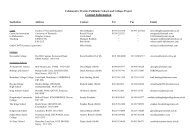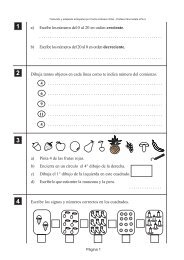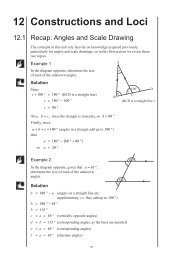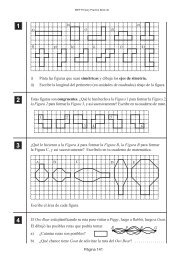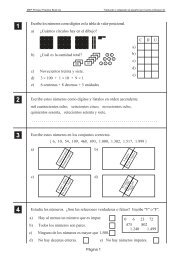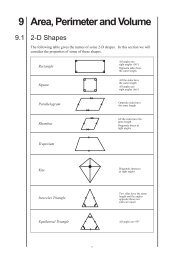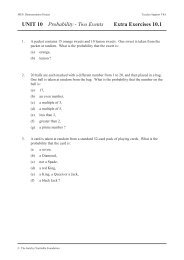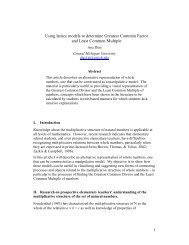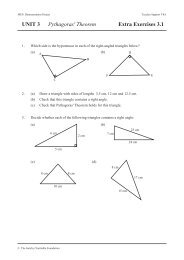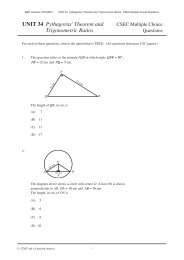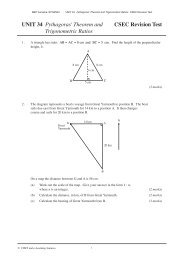It's CAME; We saw; Did it Conquer? – A review of the Cognitive ...
It's CAME; We saw; Did it Conquer? – A review of the Cognitive ...
It's CAME; We saw; Did it Conquer? – A review of the Cognitive ...
Create successful ePaper yourself
Turn your PDF publications into a flip-book with our unique Google optimized e-Paper software.
comprehensive guidance notes for each lesson, each <strong>of</strong> which has <strong>the</strong> following fourpart<br />
structure:<br />
Phase 1 Phase 2 Phase 3 Phase 4<br />
• Concrete<br />
preparation<br />
• Cogn<strong>it</strong>ive<br />
challenge<br />
• Social<br />
Challenge<br />
- 3 -<br />
• Whole class<br />
construction<br />
• Metacogn<strong>it</strong>ion<br />
• Bridging<br />
The lessons are characterised by group interactions and <strong>the</strong> emphasis is on individual<br />
or group formulations <strong>of</strong> solutions to problems ra<strong>the</strong>r than just on <strong>the</strong> end result. The<br />
outcome <strong>of</strong> <strong>the</strong> lesson is <strong>the</strong> thinking process and <strong>the</strong> sharing <strong>of</strong> ideas ra<strong>the</strong>r than <strong>the</strong><br />
specific knowledge or skills <strong>the</strong>mselves.<br />
Current Climate<br />
It seems that in order to learn, young people need opportun<strong>it</strong>ies to explore<br />
real problems and to think through <strong>the</strong>ir responses, making meaningful<br />
connections and, ideally, making <strong>the</strong>ir own meaning, ra<strong>the</strong>r than being<br />
“taught” solutions or having meaning created for <strong>the</strong>m. The challenge is<br />
<strong>the</strong>refore to make learning developmentally appropriate to <strong>the</strong> age and matur<strong>it</strong>y<br />
<strong>of</strong> <strong>the</strong> learner; socially relevant; emotionally engaging; motivational, in <strong>the</strong><br />
sense <strong>of</strong> being explic<strong>it</strong>ly relevant to real-life contexts; cogn<strong>it</strong>ively challenging;<br />
and connected.<br />
(Pathways, Proposals for Curriculum and Assessment at Key<br />
Stage 3, CEA 2003 Page 2 <strong>of</strong> Rationale)<br />
This extract from <strong>the</strong> proposal for <strong>the</strong> new curriculum in Nor<strong>the</strong>rn Ireland<br />
summarises a move w<strong>it</strong>hin <strong>the</strong> education commun<strong>it</strong>y as a whole towards a more<br />
constructivist view <strong>of</strong> education. Whilst stimulating pupils w<strong>it</strong>h challenging<br />
problems and encouraging <strong>the</strong>m to think has been a cornerstone <strong>of</strong> ma<strong>the</strong>matics<br />
teaching for many years (Polya, 1945) <strong>the</strong>re is still <strong>of</strong>ten a tension between <strong>the</strong><br />
demands <strong>of</strong> preparing pupils for examinations or “covering <strong>the</strong> curriculum” and<br />
allowing pupils opportun<strong>it</strong>ies to make <strong>the</strong>ir own learning connections. The



